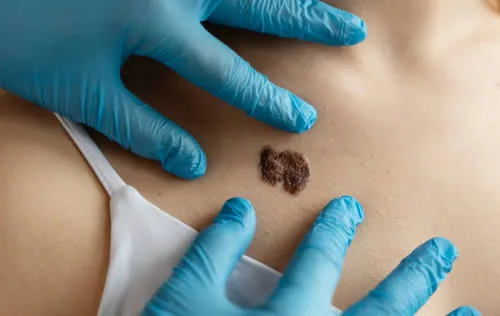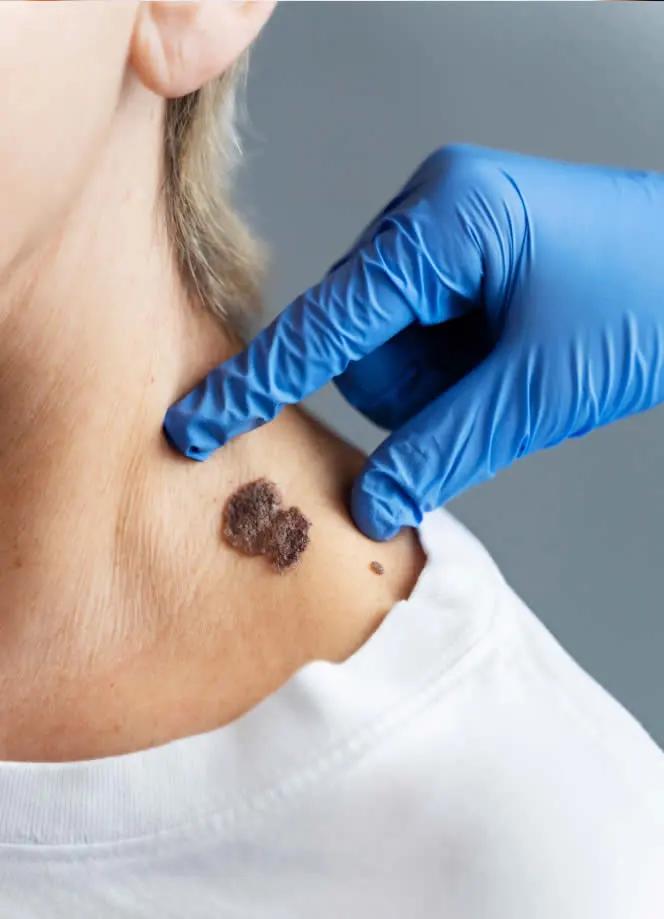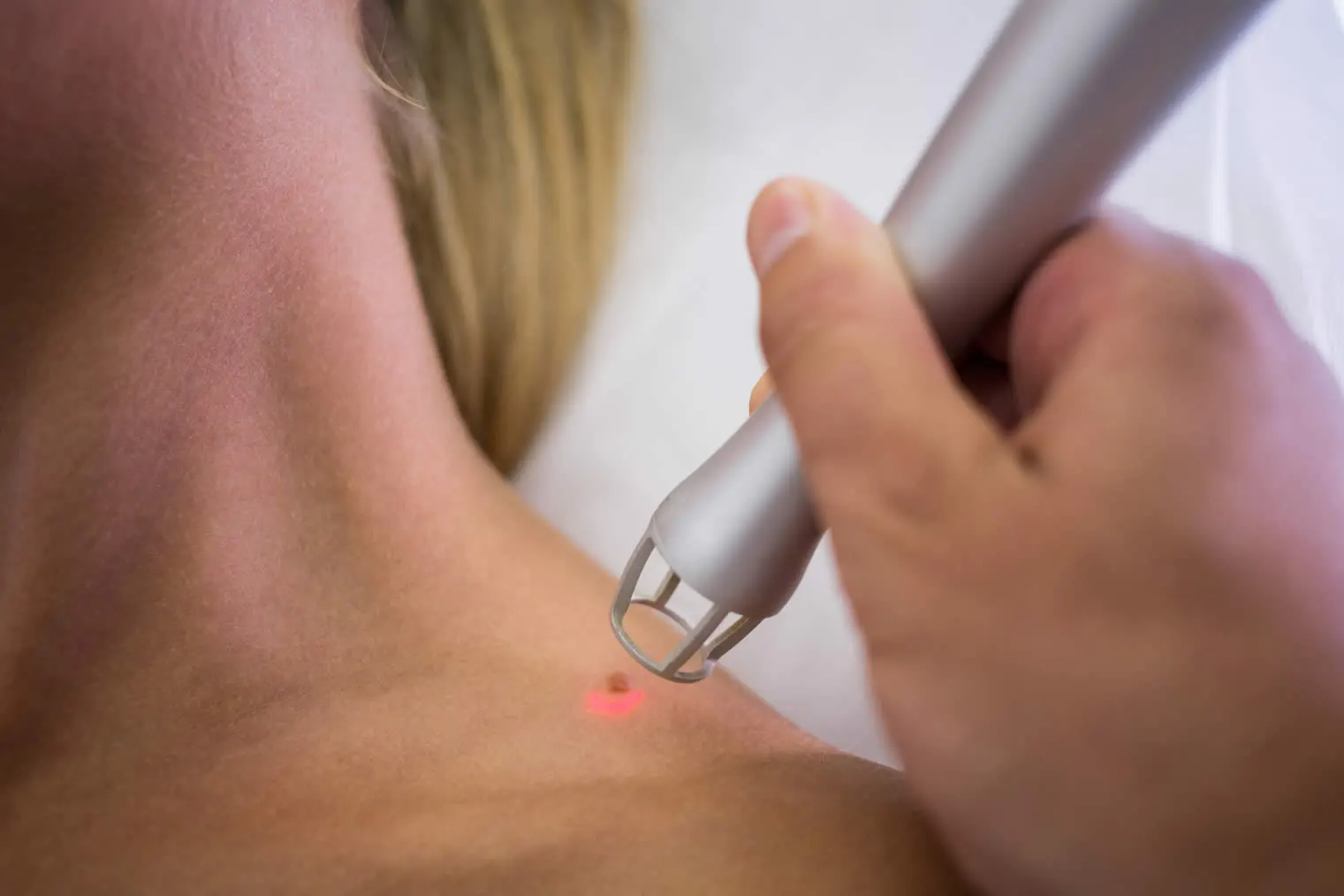What is Mole Removal?
Mole removal is a medical procedure that involves the removal of a mole from the skin. Moles are clusters of pigmented cells that can appear anywhere on the skin and vary in size, shape, and color. While most moles are harmless, some may be atypical or cancerous and require removal for medical reasons. Additionally, some people may opt for mole removal for cosmetic reasons, particularly if the mole is large, unsightly, or in a prominent location. Mole removal is typically performed by a dermatologist or a plastic surgeon, and there are several methods available, including surgical excision, laser removal, and shave removal. The choice of method will depend on the size, location, and type of mole being removed, as well as the patient’s individual needs and preferences. It is important to have any suspicious or changing moles evaluated by a healthcare professional before deciding on removal.

Understanding Moles
Moles, also known as nevi, are common skin growths composed of pigmented cells. They can appear anywhere on the body and are typically brown or black, although they can also be flesh-colored. Understanding moles and their various characteristics is essential for recognizing any changes that might indicate a need for professional evaluation by a dermatologist like DrName at PracticeName in CityName.
Types of Moles:
Moles can vary in size, shape, color, and texture. Here are some common types:
- Junctional Nevi: These moles are usually brown and round, occurring at the junction where the skin and mucous membranes meet. They are often flat and may darken with sun exposure.
- Compound Nevi: These moles are slightly raised and can be brown or flesh-colored. They are composed of cells that are both in the epidermis and dermis layers of the skin.
- Dermal Nevi: Dermal moles are often elevated and have a flesh-colored appearance. They can be hair-covered and tend to have a rubbery texture.
- Dysplastic Nevi: Also known as atypical moles, these can have irregular borders and variations in color. They may be larger and have an increased risk of developing melanoma.
- Acquired Moles: These are moles that appear over time due to sun exposure and genetic factors. They can develop throughout life.
Mole Development:
Moles form when cells known as melanocytes, responsible for producing melanin (the pigment responsible for skin color), grow in clusters rather than spreading evenly. Genetics, sun exposure, and hormonal changes play a role in mole development. While most moles are harmless, it’s important to keep an eye on them for any changes in size, color, shape, or texture.
Moles and Skin Cancer:
While the majority of moles are benign, some moles can transform into melanoma, a serious form of skin cancer. It’s crucial to monitor your moles for any of the following changes using the ABCDE rule:
- A: Asymmetry – One half of the mole doesn’t match the other.
- B: Border irregularity – The edges are uneven or blurred.
- C: Color variation – The mole has different shades of brown, black, or even red, white, or blue.
- D: Diameter – The mole’s diameter is larger than a pencil eraser (usually around 6 mm).
- E: Evolving – The mole is changing in size, shape, or color.
When Mole Removal is Recommended
Mole removal is a procedure that is considered for a variety of reasons, ranging from cosmetic concerns to potential health risks.
Cosmetic Reasons:
While moles are a natural part of the skin, some individuals may feel self-conscious about moles that are highly visible or located in prominent areas. Mole removal can be an option if you’re seeking to improve the appearance of your skin for cosmetic reasons.
Suspicion of Skin Cancer:
Regular self-examinations of your skin are crucial for detecting any changes in moles or the development of new ones. If you notice any moles that exhibit irregular features such as asymmetry, uneven borders, changes in color, or a diameter larger than a pencil eraser, it’s essential to seek professional evaluation. The dermatologist will determine whether a mole shows potential signs of skin cancer. In such cases, mole removal might be recommended for biopsy and further analysis to ensure your skin health.
Irritation or Discomfort:
Moles that rub against clothing, jewelry, or other body parts can cause irritation and discomfort. In some cases, moles might also be prone to bleeding, itching, or inflammation. If you’re experiencing any form of discomfort related to a mole. Depending on the mole’s characteristics and your symptoms, mole removal may be considered to alleviate discomfort and prevent further irritation.
Types of Mole Removal Procedures
We understand that each patient is unique, and we take the time to assess your specific situation before recommending the most suitable method for mole removal. Here are the different types of mole removal procedures we offer:
Excision
Description: Excision involves surgically removing the mole and a surrounding margin of healthy skin. This method is ideal for larger moles or those with a higher likelihood of being cancerous.
Procedure: DrName will first administer a local anesthetic to ensure your comfort during the procedure. The mole is then carefully excised using a surgical scalpel. If needed, stitches may be used to close the wound, leaving behind a small scar that tends to fade over time.
Shave Excision
Description: Shave excision is suitable for raised moles that do not penetrate deeply into the skin. It involves shaving off the mole’s elevated portion, leaving the surrounding skin intact.
Procedure: After numbing the area with a local anesthetic, DrName will use a scalpel to gently shave off the raised part of the mole. Stitches are typically not required, and scarring is minimal.
Laser Removal
Description: Laser technology is used to break down the pigmented cells within the mole. This method is often chosen for smaller moles that are not deeply rooted.
Procedure: DrName will use a focused laser beam to target and break down the mole’s pigmented cells. The treated area forms a scab, which eventually falls off, revealing healthy skin underneath. Laser removal is known for producing less scarring compared to surgical methods.
Cryotherapy
Description: Cryotherapy involves freezing the mole using liquid nitrogen. It’s typically suitable for smaller, non-cancerous moles.
Procedure: DrName carefully applies liquid nitrogen to the mole, causing it to freeze. Over time, the frozen mole will form a scab and eventually fall off, leaving behind smoother skin. This method is relatively quick and minimally invasive.

Choosing the Right Method for Mole Removal
The choice of removal method depends on several factors, including the characteristics of the mole, its location, your preferences, and your medical history.
Factors Influencing the Choice:
- Mole Type and Characteristics:
Different types of moles require different approaches. DrName will assess whether your mole is raised or flat, pigmented or non-pigmented, and its overall size. This evaluation will help determine the most effective removal method. - Location of the Mole:
The location of the mole on your body is an important consideration. Moles in sensitive areas, such as the face or neck, may require a method that minimizes scarring and maintains cosmetic appeal. - Mole Size:
The size of the mole plays a role in the choice of method. Smaller moles might be more amenable to methods like shaving or laser removal, while larger moles may require excision for complete removal. - Medical History:
Your medical history, including any underlying conditions or allergies, could impact the choice of removal method.
FAQ About Mole Removal
Is mole removal painful?
Mole removal is typically a minor procedure that is performed with local anesthesia to minimize discomfort. Patients may experience some mild pain or discomfort after the procedure, but this can usually be managed with over-the-counter pain medications.

